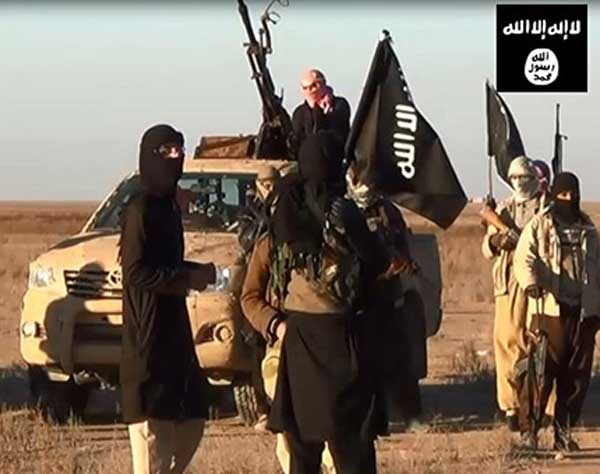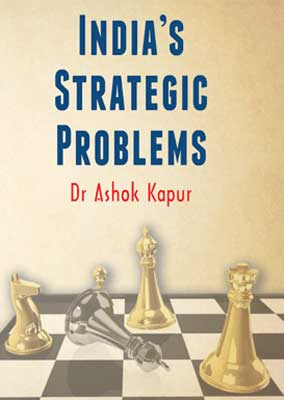The Middle East is in turmoil. America had the economic and military resources and the confidence, as well as the ambition, to expand its presence and influence, and with this in mind, it developed a series of alliances in the world between Israel and Pakistan, as well as in South East Asia. Moscow reacted to the expansion of American power in the region and developed its pattern of alignments with a few states, and a Cold War rivalry ensued. But with the collapse of the USSR, America emerged as the sole superpower in the Middle East. Believing that it had won the Cold War, it expanded NATO by incorporating east European states into the NATO and European Union fold, and thereafter a process to intervene in the Middle East region began, which American practitioners believed they could control as there was no international opposition to their expansionism. The rhetoric was to promote regional stability under American leadership and to build the foundations of democracy and civil society in the region again according to American norms and interests.
The ISIS has not been recognised by the world community as a new state, but the fact is that it exists and has filled the vacuum created by the destruction of the state structures of Iraq, Syria, Libya and Yemen…
The rise of the ISIS is not a freak episode. It has been years in the making. It is a Salafi group, proclaimed itself as the caliphate in June 2014 and is led by Sunni Arabs from Iraq and Syria. According to Wikipedia data, it now controls over 10 million people in Iraq and Syria and has some control in Libya and Nigeria and appears to have affiliates in South Asia. It is a battle tested organisation, having participated in the Syrian civil war, in the Iraq conflicts (2003–2011), in the Iraqi insurgency (2014– present) and in the Libyan civil war. It played a role in Nigeria with Boko Haram and has been involved in north-east Pakistan, Afghanistan and Yemeni conflicts. Unlike al-Qaeda, which targeted US interests, the ISIL/ ISIS strategy has been to secure territorial control of large territories in the Middle East and develop its claim as the new caliphate on this basis.
The ISIS/ISIL has not been recognised by the world community as a new state, but the fact is that it exists and has filled the vacuum created by the destruction of the state structures of Iraq, Syria, Libya and Yemen; these states exist on paper and in the UN system, but they are nonfunctioning and dysfunctional entities. The twin facts – the destruction of four states that were formed by the colonial powers after the First World War, following the wrecking of the Ottoman Empire, and the rise of a new caliphate – are signal events in modern world history. Until recently, Bangladesh was the first new country to achieve statehood through a political and a military fight after World War II; the rise of the ISIS/ ISIL is a reminder that as international institutions weaken or fail; as great powers fail to create order, stability and authority in the international system; and as bad behaviour by the major and lesser powers becomes endemic, non-state actors see an opportunity to build their ideological and military positions in areas with a power vacuum.
The ISIS has evolved in its affiliations and claims as per Wikipedia’s information. It joined al-Qaeda in 2004, declared the existence of the Islamic state in Iraq in 2006, claimed territorial control in Syria in 2013, split from al-Qaeda in February 2014 and declared the ISIL/ISIS caliphate in June 2014. In November 2014, it also claimed to control territory in Libya, Egypt, Algeria, Saudi Arabia and Yemen, and by January 2015, it claimed to hold territory in Afghanistan, Pakistan and parts of India and expanded its list to Nigeria (March 2015) and the North Caucasus (June 2015). Whether or not each claim can be verified, the list shows the scale of its ambition and a disdain for the internationally recognised law of sovereignty and state boundaries.
Estimates of the size of the ISIS forces vary between 20,000–30,000 according to the CIA and 200,000 according to the Kurds, and the huge gap in the estimates shows the limitations of Western intelligence in the Middle East…
Its follows the ideology of Salafism and Wahhabism, which also inspired al-Qaeda and the ISI in Pakistan and the Taliban in Afghanistan; but al-Qaeda cut its ties with the ISIS/ISIL in February 2014 because of its ‘notorious intransigence’. The US and other Western powers stayed on the sidelines as the ISIS/ISIL was building its military and territorial positions and its claims as the new centre of moral and military authority in the Middle East and South Asian regions, but it took the loss of Iraqi territory to the ISIS/ISIL for the Obama administration to get involved militarily in 2014 in the form of air bombings and limited support to the Kurds and the Syrian rebels who were fighting Assad.
Even though Muslims have been critical of the ISIS/ISIL actions (the beheadings and destruction of cultural sites) and believe that it has moved away from true Islamic teachings, thus far, it has been immune to such pressures from moderate Muslims and clerics and instead it has shown a capacity to maintain territorial control over large territories and to use the social media to spread its message and to attract foreign recruits from among Muslim, Russian (Chechen) and Western populations in Europe, North America and Australia. Wikipedia’s report ‘Islamic state of Iraq and the Levant’ provides the maps for areas controlled by various forces where the ISIS/ ISIL is involved. Estimates of the size of the ISIS/ISIL forces vary between 20,000–30,000 according to the CIA and 200,000 according to the Kurds, and the huge gap in the estimates shows the limitations of Western intelligence in the Middle East and the ability of a tightly organised political and military organisation to overrun a vast region.
Several factors explain the rise of the ISIS/ISIL:
- According to the Oxford University’s Islamic Studies online report, the marginalisation of the Sunni population in Iraq was an important factor and Iraq’s parliamentary elections in 2010 was a turning point. Ayad Allawi won the support of the Sunni population and defeated Maliki’s Shia party but Maliki and Shia coalitions with US backing formed the government with Maliki as prime minister. He targeted Sunni leaders, and the internal division grew within Iraq as did the mistrust of US policy.
…because of US policy failures in the Middle East, the ISIS/ISIL has been able to secure the support of anti-US sentiments in the region…
- Secondly, according to Oxford’s analysis, ISIS/ISIL fighters are battle hardened while Iraqi forces are not and they are also not motivated to fight in Syria.
- Third, the ISIS has been able to exploit captured oil fields to gain revenue in millions of dollars, to ask for large ransoms for kidnapped people and to use captured Iraqi military equipment of US origin to pursue its aims.
- Fourth, because of US policy failures in the Middle East, the ISIS/ISIL has been able to secure the support of anti-US sentiments in the region and it is part of its appeal to the foreign media and a part of the campaign against Westernstyle democracy and the policy of interventions – military and political – in the region’s military crises and in local elections and domestic politics.
- US policy under Presidents Bush and Obama has followed a pattern of surge followed by retreat, and this pattern has not created the basis of a military or political settlement among warring parties; instead, it has created power vacuums in different parts of the Middle East, which the stronger, better armed and organised and motivated force can exploit.
The ISIS/ISIL has a calculated military and a political-psychological calculation and strategy. Its local military commanders fit a pattern of decentralised organisation, and they are trained to act independently but to avoid fights they cannot win. As in the case of Mao’s military tactics, the local commanders are authorised to act at the weak points in the enemy camp. It has calculated to occupy land which the Shias and the Kurds will not fight for and die.
There appears to be a strong touch of Mao’s military thinking in the ISIS conduct.
For instance, the ISIS/ISIL took Mosul, an important gain, because the Kurds and Sunni Arabs would not fight for Maliki. Part of the calculation is not to attack Baghdad because there is no assurance of military success and an ability to control the population. Not only do they use the social media to their advantage to spread fear among the watchers and listeners, they also use social contradictions among Middle Eastern leaders and groups to their advantage. There appears to be a strong touch of Mao’s military thinking in the ISIS/ISIL conduct. Apart from ransoms and plunder, it controls about 60% of Syrian oil fields, which give it a secure source of revenue to maintain its political and military organisation.
The rise of the ISIS/ISIL points to the rise of a strategic triangle: the ISIS/ISIL + Sunnis versus Iran, where the US is marginal on the ground but has shaped the political-psychological-cultural environment by intervening and retreating and by aiding Malaki but not the Sunnis. Lastly, the US/P5-Iran nuclear talks and agreement showed the US recognises Iran as a major regional player and a potential partner for other issue-specific regional cooperation in Afghanistan and in the fight against the ISIS/ISIL. While the US is not seen as a friend of the Sunnis, even Saudi Arabia, USA’s long-time ally, now mistrusts the Obama establishment and policy. The Iranian militias have been fighting along with the Kurds to shore up the opposition to the ISIS/ISIL and to contain its territorial advances.






